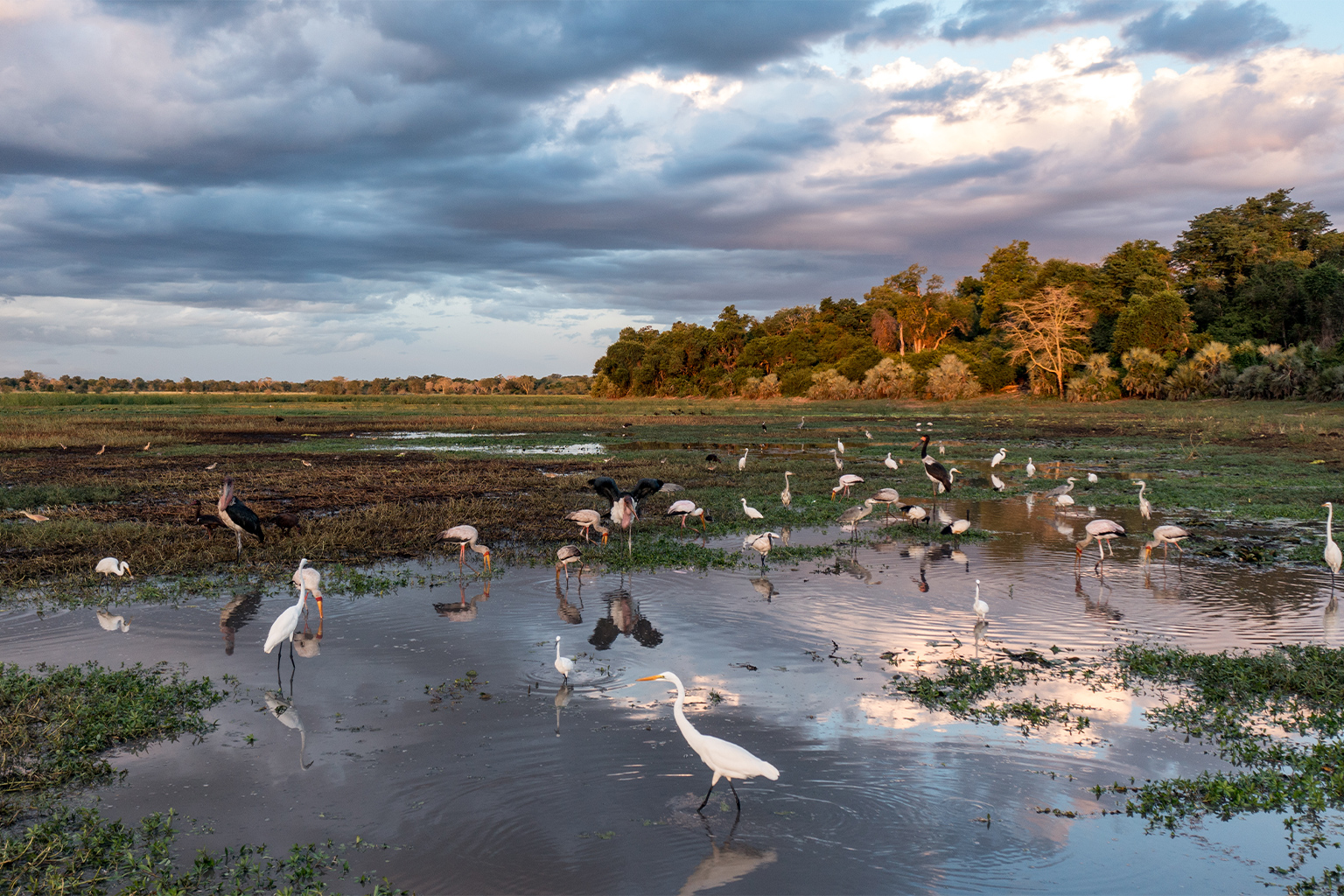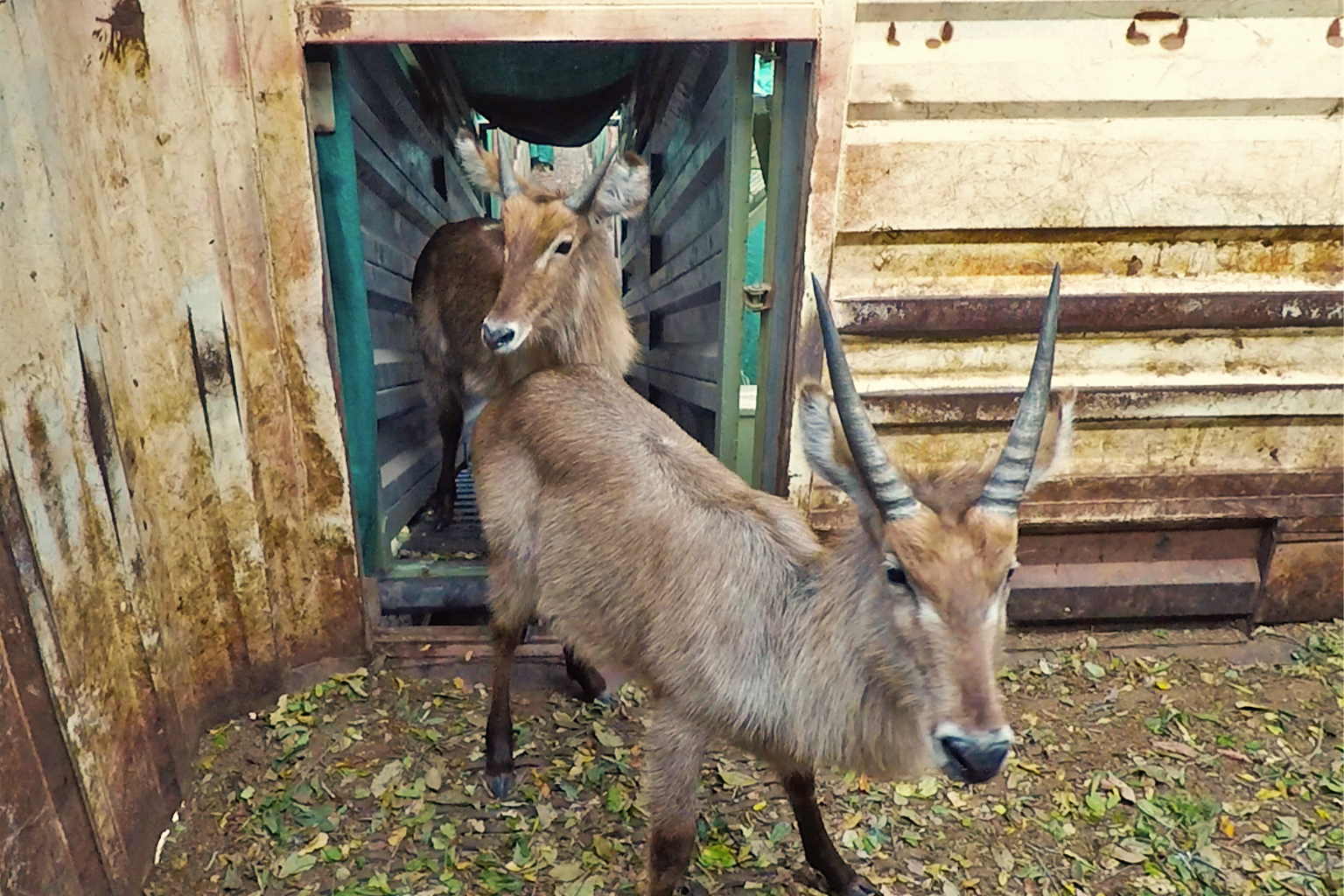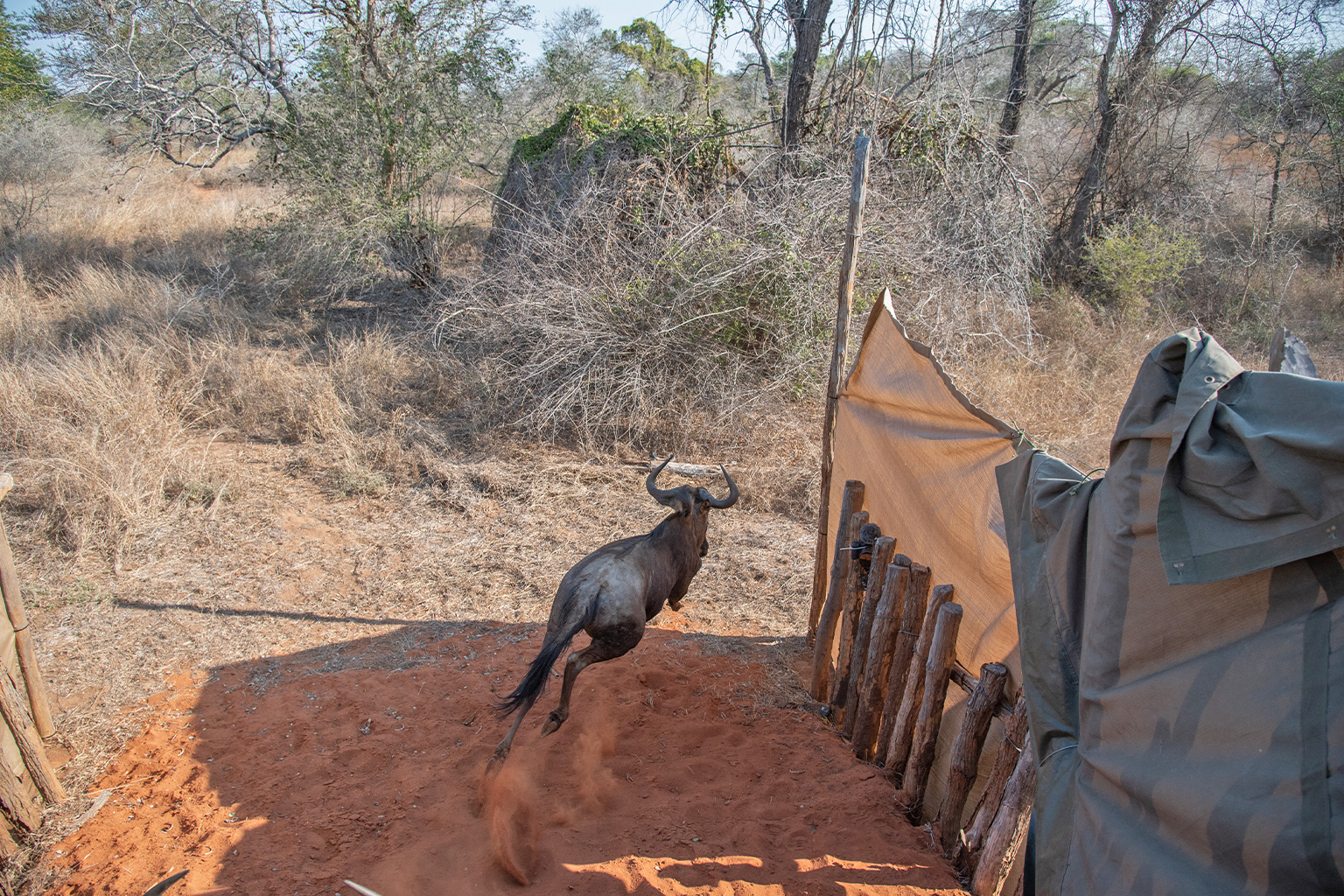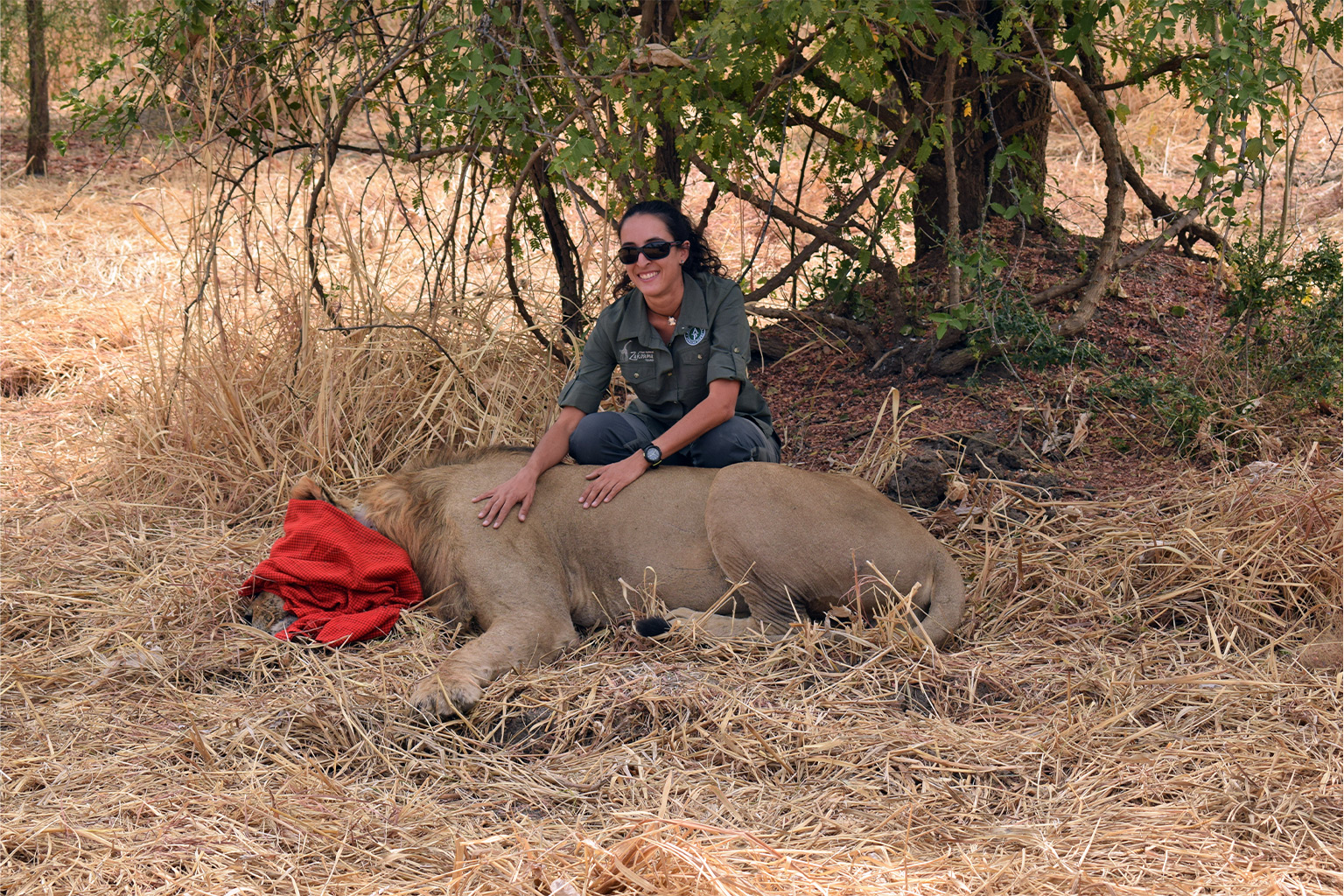- It’s a critical time for lion conservation as the species declines across Africa. Globally, the lion population has dropped by 43% over the past 21 years.
- Lions are classified as vulnerable by the IUCN, with the species facing a high risk of extinction in the wild. In many of the lion’s core ranges across Africa, populations have plummeted due to, among other reasons, habitat fragmentation and poaching.
- But some African lion populations are increasing, with the big cats spotted after years of absence in parks in Mozambique and Chad. The reason: the creation of vast protected landscape mosaics, with natural corridors stretching far beyond core protected lands, which consider the large areas lions need to roam seasonally.
- This strategy entails collaboration between multiple stakeholders and across varied land uses, including state lands and private property not formally protected. These examples are showing that conservation across landscape mosaics is possible in Africa, and offer the promise of wider benefits to ecosystems and people.
When Bernard van Lente, the Peace Parks Foundation project manager for Zinave National Park, first arrived at the Mozambican conservation area in 2015, he was struck by the silence. Zinave was stunningly beautiful, he recalls, with huge trees and tall grasses, but it was deathly quiet — like a graveyard.
Zinave had been protected just before the outbreak of the Mozambican civil war in 1977, and the ensuing chaos caused the new national park to collapse. Few animal species survived as insects, birds, antelopes and top predators were extinguished.
Things have changed dramatically since then, van Lente says. In 2021, a lion appeared in Zinave for the first time in many decades, the crowning jewel of renewed conservation efforts. But Zinave isn’t the only place lions are making a comeback. Examples are emerging at protected areas across Africa, from Mozambique to Chad, Zambia to Senegal.
The successes come at a critical time for conservation of the species. Lion populations are declining in Africa, plummeting to around 20,000 in the past five decades or so, says Kim Young-Overton, director of Panthera’s KAZA program. According to the IUCN Red List, Panthera leo is vulnerable, with the global lion population shrinking by about 43% over the past 21 years (a timespan covering just three lion generations, from 1993 to 2014).

Lions need to roam
The decline is partly precipitated by too widely scattered conservation areas. Healthy lion populations need to be able to move according to seasonal patterns, while young males must be able to disperse away from their natal areas to carve out new territories. This wide roaming by the big cats ensures the gene pool remains viable and connected across vast areas, Young-Overton says.
But protecting lions across so much territory requires out-of-the-box thinking, and has resulted in the creation of large-scale cooperative conservation projects across big landscapes — often extending far beyond the boundaries of formally protected areas.
According to Naftali Honig, general manager of the Greater Zakouma Ecosystem, a mosaic of protected areas in southeastern Chad, this approach is already achieving success. “We are able to protect amazing open ecosystems in Africa through landscape management and the development of mosaics comprised of national parks, as well as multiuse lands that create sustainable livelihoods,” he says.
“Mosaics are possible, and they allow these open systems with migratory corridors to thrive,” he declares.
The reconnection of protected areas across international borders via wildlife corridors that pass through once fragmented habitats has been key to the success at Zinave, says Peace Parks Foundation CEO Werner Myburgh. The foundation is restoring the park under a co-management agreement signed in 2015 with the Mozambican Ministry of Land, Environment and Rural Development.

The rehabilitation of Zinave
Zinave National Park covers 4,080 square kilometers (1,575 square miles), and forms the easternmost block of the larger, 100,000-km2 (39,000-mi2) Great Limpopo Transfrontier Conservation Area (GLTFCA) in Southern Africa.
The GLTFCA includes a mosaic of landscapes under various forms of protection, including state- and privately owned lands that stretch across the shared borders of South Africa, Mozambique and Zimbabwe. It’s largely an open landscape system, though there are some fenced-off areas, such as South Africa’s Kruger National Park.
Because Zinave had lost so much of its wildlife, its restoration required thousands of animals be brought back to the park. They were initially released into a 186-km2 (72-mi2) fenced sanctuary (currently being expanded to 330 km2, or 127 mi2). From there, the wildlife will be released into the wider park as security measures are enhanced. These animals will then smooth the way for the natural return of others, including lions.
“The whole idea of rewilding is to bring back key species that change the habitat to be suitable for other species,” van Lente explained. Big grazers like elephants, for example, open the veld; while buffalo, waterbuck and zebra keep the grass short, creating habitat suitable for species such as rhinos. About 2,400 animals have been released into the wider park so far, and they’ve reproduced to total more than 9,000.

“The place came alive!” exclaims van Lente, describing today’s noisy restored ecosystem full of bird calls and insect drones. Still, this has been no easy or natural restoration process: Myburgh remembers the “bizarre” sight of restored animals dying of old age or sickness and, without vultures and scavengers to consume them, their carcasses rotting in the veld.
In 2020, the renewed landscape was finally deemed suitable for the reintroduction of predators, leading to the release of four spotted hyenas in 2020, and a pair of leopards the following year. Lions were to follow in future.
But much to everyone’s surprise, a huge male lion, “in the prime of his life,” was caught on a camera trap inside the sanctuary in 2021. This year, rangers spotted an additional lioness and cub.
Park officials don’t know exactly where the lions are coming from, but they likely walked in from one of the other national parks that make up the GLTFCA — Kruger in South Africa, Limpopo in Mozambique, or Gonarezhou in Zimbabwe — to prey-rich Zinave. A journey from any of those three conserved areas would require safely crossing hundreds of kilometers of the GLTFCA, Myburgh says — a remarkable passage that offers living proof of the success of the landscape mosaic protection concept.
But that’s not the end of the success story: Another wide-roaming lion caught management by surprise — this time in Chad.


The lion that pinpointed the link between core protected areas
When African Parks took over the management of Zakouma National Park in Chad in 2010, 90% of the 4,000 elephants that once roamed there had been poached, and that violent havoc rippled through the rest of the park’s species and into neighboring communities.
By 2017, with poaching practically eliminated, and Zakouma National Park becoming an economic stronghold in the region, the preserve’s management took over responsibility for neighboring Siniaka Minia Wildlife Reserve and Bahr Salamat Faunal Reserve. Today, these three core conserved areas serve as the heart of the newly established Greater Zakouma Ecosystem (GZE).
This nearly 28,200-km2 (10,900-mi2) unfenced landscape mosaic includes formally protected areas connected by natural corridors, some that are protected at a lower status than national parks, and some with no formal protection in place.
As at Zakouma, the first priorities of the GZE’s managers in Siniaka Minia was to increase security for wildlife and community members, followed by the reintroduction of certain animal species. Buffalo, for example, were translocated from Zakouma to Siniaka Minia, achieving the first stable buffalo population there in half a century, says Honig.
But, he adds, the management team knew that for the GZE to be fully functional, connectivity had to be strongly reestablished between Zakouma and Siniaka Minia. That way, migratory species that once traveled between the two formally protected areas could do so again. This renewed connectivity would also end the need for active wildlife translocations.

“We just need to make Siniaka Minia more attractive [ecologically] to key species for local wildlife populations to increase,” says Chiara Fraticelli, research coordinator for the Greater Zakouma Ecosystem.
In 2022, one lion’s journey proved their hypothesis correct and fulfilled their hope. The young male, about 5 years old, was radio-collared in Zakouma in May, and stayed close to the park’s western boundary throughout the wet season. Then, surprisingly, he walked 160 km (100 mi) to Siniaka Minia. It’s very likely he was looking for territory to establish himself, Fraticelli says.
In August 2021, another radio-collared lion moved from the south part of Zakouma, across the Greater Zakouma Ecosystem, all the way to the Aouk Project Area — a distance of roughly 40 km (25 mi) as the crow flies.
“Again, this proves connectivity across southern Chad,” Fraticelli says.
Conservation stretches far beyond core areas
 Greater Zakouma Ecosystem general manager Naftali Honig, left, at work. Park authorities regularly work far beyond the boundaries of core protected areas. Image courtesy of African Parks. |
Africa’s wide-ranging lions demonstrate that corridors don’t need to be as ecologically complete, inhabited by a full suite of species, as fully protected core parklands do. However, those natural connectors do need to be ecologically intact and offer enough prey to sustain the big cats on their walkabouts, Honig says.
To achieve this goal, park authorities regularly work far beyond the boundaries of core protected areas. Maintaining the Greater Zakouma Ecosystem requires the conservation of wildlife moving across an area an order of magnitude larger in size than Zakouma National Park itself, notes Honig.
The far-reaching initiative requires close collaboration between park staff and local communities outside the preserves, and helping people develop sustainable livelihoods to reduce hunting and wildlife conflicts. “Essentially, the goal is to have anchor areas like Siniaka Minia and Zakouma, surrounded by areas where wildlife and people can coexist well together,” Honig explains.
A similar approach is achieving good results at Kafue National Park in Zambia. The 22,400-km2. (8,650-mi2) park is the core of the larger, 66,000-km2 (25,500-mi2) unfenced Greater Kafue Ecosystem, which includes a patchwork of game management areas adjacent to large, unprotected communal areas, where models for sustainable natural resource use are being developed to foster peaceful relationships between people and wildlife. As in the GZE, this effort, too, fosters alternative livelihoods to stem poaching.
Annual monitoring of lions, leopards and their prey species within the region’s intensive protection zones indicates that the big cat populations are making a slow recovery. Young-Overton says continued success depends on close cooperation between multiple parties, including the off-site statutory authority and community partners in the field.
The alliance is striving to protect the Greater Kafue Ecosystem boundaries, minimize conflict between communities and wildlife, reduce demand for wildlife parts and bushmeat well outside protected areas, support communities with livestock management strategies and animal husbandry techniques, and offer community conservation education.

More good news for lion conservation also recently came out of Senegal, where critically endangered West African lions at Niokolo Koba National Park increased their population from no more than 15 individuals in 2011 to 30 today, due to persistent anti-poaching and scientific monitoring efforts. The park recently released video and photos of a lioness and her three young cubs.
Myburgh notes that the Peace Parks Foundation likewise follows a holistic approach to conservation in which communities close to core protected areas are integral to success. This includes cooperative initiatives that help local people benefit from the green economy fostered by the parks, along with investments in sustainable cattle farming to help prevent degradation of communal lands.
The benefits are far-reaching for people and wildlife. Lions are an umbrella species, Young-Overton points out. “Protecting them at the landscape scale, across the totality of their range, also ensures that rivers, forests, and all of the prey species and ecosystem services that flow on from that are protected.” She notes that protection at this vast scale will also help human and natural communities better prepare for escalating climate change impacts.
The benefits are clear, too, on a far smaller scale. On his last visit to Zinave National Park, Myburgh says, the once-silent park exploded after sunset in myriad sounds, including the nocturnal grunt of a lion.
Banner image: Zakouma National Park has become a stronghold in Chad for the protection of wildlife, including the iconic lion. Image courtesy of African Parks.
Video of rare West African lion cubs sparks hope for the population
FEEDBACK: Use this form to send a message to the author of this post. If you want to post a public comment, you can do that at the bottom of the page.
